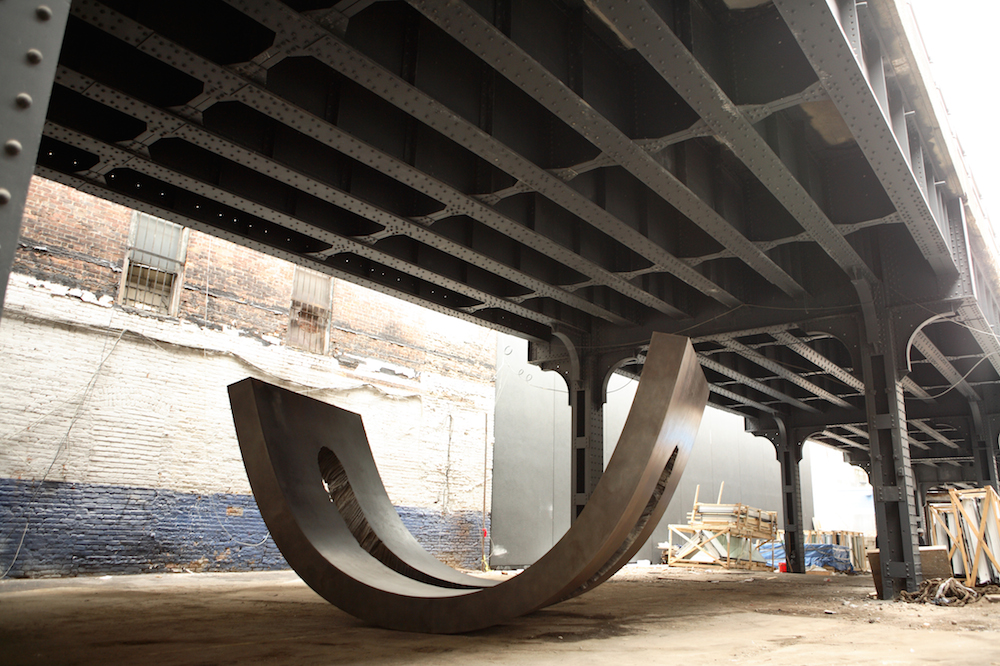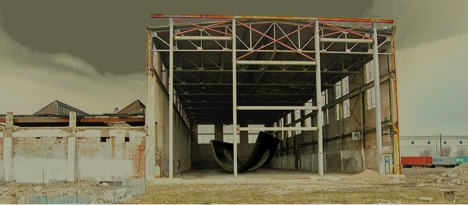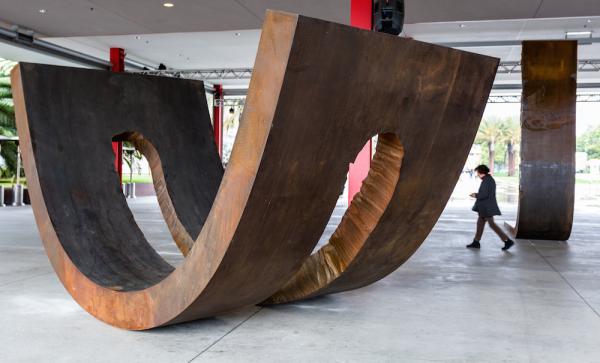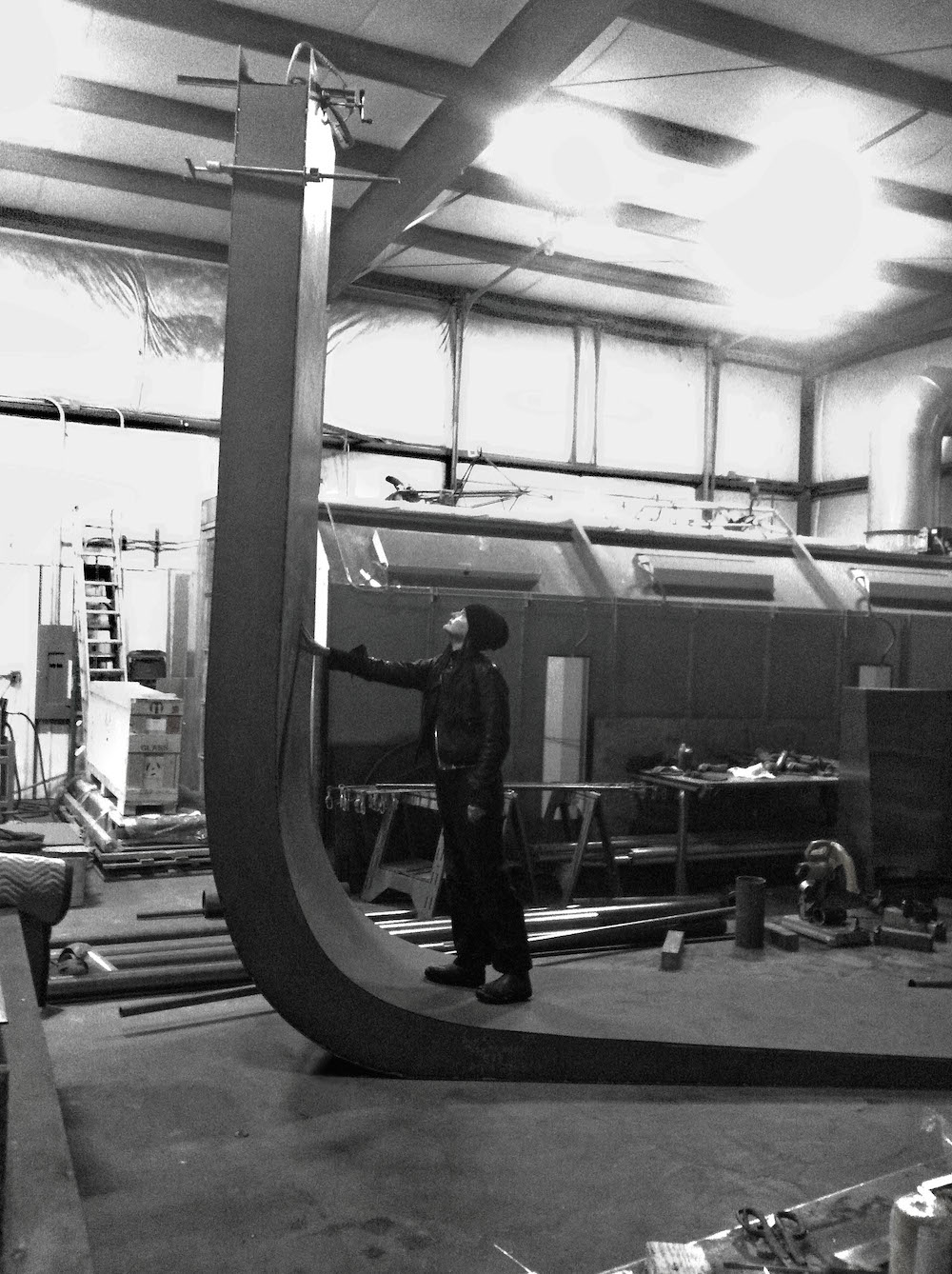Two new entities have recently joined Chris Burden’s Urban Light in LACMA’s BP Grand Entrance. They are large, dark rust-colored Forms—“with a capital F,” as the artist refers to them—and are part of Christine Corday’s protoist series.
Corday coined the term “protoist” in order to describe her focus of large-scale objects. The word incorporates the Greek root proto, meaning “first,” a term that Corday employs to embody notions of the primordial. Her entities explore concepts of the “form before the form, [or] a prototype of the form” or, in other words, the idea of creation. In the process of making her protoist structures, Corday embarks on an exploration of “something before the unknown becomes the known.”

UNE is U-shaped and reminiscent of a half-pipe. Despite its exceptional size, UNE seems like it should teeter on its dramatically curved bottom. The Form has a crudely carved suture running down the length of its center, creating an aperture into which visitors can walk. Corday’s first protoist invention, UNE premiered in 2008 under the High Line in New York City. The artist describes its debut placement as “a complete unexpected moment,” where viewers were put in a position of contemplation. “This is not necessarily where I would encounter art. Is it art that I’m encountering? What is it that I am encountering?”

The L-shaped KNOUN (pronounced “known”) explores balance—the perfect combination that allows a body to remain upright. The title KNOUN is a fusion of the two words: “known” and “noun.” Corday explains that the piece is a “set for our human apparatus to stand on” so one can experience its “curious sense of balance and gravity.”
LACMA is the first museum to present UNE and KNOUN. The Forms are meant to act as recording devices, documenting “conversations” visitors have with them. As the works are touched, they will rust over time, and the point of contact becomes a part of these ever-evolving pieces. Corday recognizes, however, that the current environment will interfere with how viewers interact with her protoist structures.
Reflecting on the effect museum etiquette will have on UNE and KNOUN Corday states: “It is actually about that moment [of] wanting to touch it and being allowed to [ . . . ] it’s about permission.”
“It would be incredible for Angelenos to know that this is their moment to be recorded—for the whole city to know that they are being collectively recorded.”
UNE and KNOUN will be on view at LACMA until April 5. Check back here on Unframed to learn more about Christine Corday, her history, and her process—which uses heat equivalent to that found at the Earth’s core.




